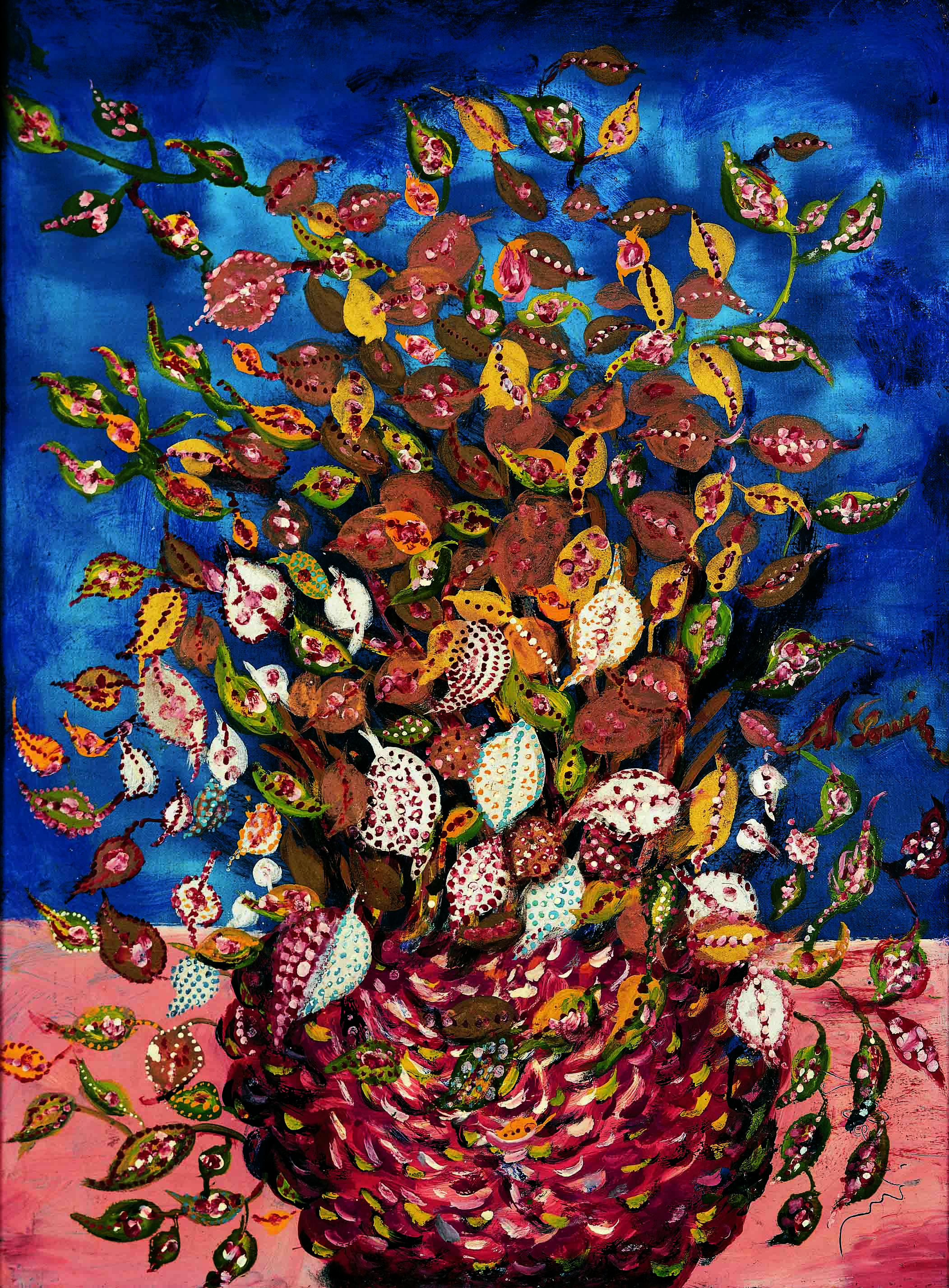Séraphine Louis
|||||||||||
(Arsy, 1864 -Villers-sous-Erquery, 1942)
Séraphine Louis, also known as de Senlis, was born into a humble family. At the age of seven, she became an orphan and between 1882 and 1902 worked as a housekeeper in the convent of the Charité de la Providence (Providence Charity) of Clermont-sur-Oise. This had an extremely religious impact on her, and she claimed that it was the Virgin Mary herself who inspired her own artistic vocation. She then worked as a maid for a wealthy family in Senlis and, in 1906, created her first pieces on wood at night in extreme isolation. In 1912, she started working for the art collector and critic Wilhelm Uhde. He discovered her surprising talent by accident. From then on he allowed her to fully commit to her work and persuaded her to work on larger formats. However, in 1914 he was obliged to leave France, and it was only in 1927 that he regained contact with her. He bought all of her paintings and in 1929 exhibited her in his famous exhibition Les peintres du cœur sacré – the sacred heart painters. He was nevertheless forced to end his commitment in 1930 due to the disappearance of buyers following the Great Depression. Séraphine, who was financially out of her depth, was severely affected and psychologically exhausted. In 1932, she was admitted to a psychiatric hospital, which marked the end of her artistic career. She died in 1942, and is buried in the mass grave of the Clermont cemetery.
The German collector wrote: “I now realize that if I encouraged Séraphine de Senlis, it was not because of the primitive or the surrealist aspect of her paintings but rather because she is one of the great immortals who exceed the limits of a movement or a school”.
Séraphine expresses her own intimate universe, which she believes to be divinely guided. The result is an astonishing collection of surrealist bouquets, painted with the same ardour and fervour that medieval artists felt when demonstrating their faith in God. In Wilhelm Uhde’s words, her paintings feel like an “ecstatic confession”. She stands at the border between artistic passion and the art of pathology. Her large flower bouquets spatter the canvas with tears of blood while eyes usurp fruits on the branches of imaginary trees.
Séraphine has her place among the Primitifs Modernes – Modern Primitives – collected by Wilhelm Uhde (Bauchant, Bombois, Douanier Rousseau, Vivin), who now occupy a dedicated room at the Musée national d’art moderne – National museum of Modern art – Centre Pompidou. They represent a decisive moment in the art history in the twentieth century by questioning the very principles of educated art in favour of other, exotic or primitive cultures, and by offering an unfettered painting style, both intuitive and sincere.

Le bouquet de feuilles, 1929-1930
Huile sur toile
81 x 61 cm
Œuvre non disponible

